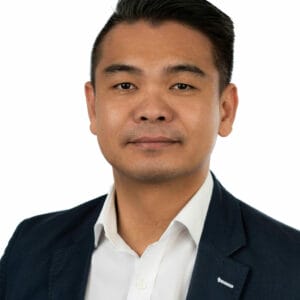With social media and content marketing, businesses have more opportunities than ever to reach a vast audience. So how do you do the same? One way is by creating shareable content that will generate buzz within their niche communities.
In this article, we discuss the importance of making shareable content. We have also included the best tips to create viral, shareable content easily.
What’s the Point of Shareable Content?
Shareable content encourages the social sharing of any online material, including blog posts on your professionally designed website, videos, social media posts and infographics. It’s content people want to share with their friends, family members, and coworkers.
Making shareable content is essential for businesses because it drives traffic back to your site and increases customer engagement rates over time.
When you share this relevant, engaging and valuable content, you’re able to develop a loyal following. These supporters are those who learn about you through your share-worthy content and stay because of your brand.
Additionally, people tend to be resistant when you try to sell your brand or services to them. As such, shareable content plays a vital role in making your potential customers more receptive to your messages. Before they try to learn about your brand in detail, you have already become one of the industry experts that they can trust.
Shareable Content Creation Tips
What makes a piece of content more shareable than another? How do you get more social shares on your content?
Creating shareable content takes time and effort, but following these tips is an excellent start. By using them, you can create engaging and entertaining content and achieve greater reach than ever before.
In this section, you’ll discover tips on making your content more shareable via the content and the distribution strategy.
Content Strategy
1) Search up recent questions people ask on social media.
How do you know what people are asking about? Besides looking into social groups on popular social media platforms like Facebook and LinkedIn, you can also learn about what others are curious about by browsing Quora and Reddit.
Tools like Answer the Public and QApop can help you do the research faster.
2) Use a compelling call to action at the end of your content.
When a person asks a loaded question, it means to phrase a question in a way that would serve the asker’s agenda. Typically, a loaded question is used as a rhetorical tool to limit responses that contradict the asker’s standpoint or bias.
An example of a loaded question is:
“Why do you think having a content marketing strategy is useless?”
In a way, a call-to-action might be similar to a loaded question because you’re guiding the conversation in a specific direction. However, the end goal is not to limit engagement but provide a conversation starter or spark a debate. For example:
“Do you think SEO is dead, or will SEO be around for the long-run?”
Alternatively, you can push for a specific narrative and ask if anyone disagrees; this would more likely work if it’s a controversial topic or if your viewpoint belongs to the minority.
3) Include power words in your headline.
The goal of a powerful headline is to get the reader hooked on reading the full article, so they’ll share it afterwards. When someone reads the headline of your content, they should feel excited about what they’re about to read.
Power words are words that evoke a strong emotional response and can’t be ignored. They compel your readers to click on the link and share it with others after reading the content.
Excerpt of Vanity Power Words. Image Source: Optinmonster
For example, if you’re writing about why SEO is dead and how ancient marketing techniques are making way for new ones, use power words like “dead” or “failure.” That being said, avoid over-sensationalising your headlines unless the content you provide lives up to what you’re promising in your headline.
4) Add nostalgia to your messages.
Other than a compelling headline, you want your content to evoke emotional reactions from your readers. Memories become more resilient when attached to strong emotions, namely sentimentality for a time or place associated with positive feelings.
Consumer research discovered a positive association between the use of nostalgia in marketing and consumer spending. Due to the pandemic, there is also a shift in the B2B landscape that blurs the line between consumers and businesses. Customer experience expectations have evolved, and many content marketers are starting to see how effective nostalgia marketing is in attracting B2B customers.
So how do you incorporate nostalgia in your content?
You may start by sharing personal stories or past experiences. If you’re a business owner, talk about some of the struggles you’ve experienced due to the pandemic, but don’t stop there. Add a throwback to a time before Covid-19, something everyone can relate to and reminisce about. To add more value to your story, you’ll want to share how you’ve overcome it and encourage others to share their own stories.
Social validation is a powerful strategy. The more you get people to share, the more people will want to jump on the bandwagon.
5) If you’re sharing text-based content, try to keep each paragraph below 100 words.
The idea behind this is to maximise readability so that your readers are more likely to read until the end.
Including images in this type of content gives it more visual impact; they can communicate information in a concise way that text cannot. Therefore, consider including 1-3 relevant images in your content so that it’s more shareable to a broader audience.
6) For video content, you’ll want to share a preview with your audience.
The best way is to share an ‘ice breaker’ or ‘teaser’ type video that will pique your readers’ interest and make them anticipate the actual content.
However, considering the variation in your audience’s preferences, it might be beneficial to transcribe video to text. This allows those who prefer reading over watching a video to fully grasp your content. Likewise, generate subtitles for those who might be watching in noisy environments or are hard of hearing. It’s all about accessibility and reaching as many people as possible with your content.
As videos are also excellent shareable content, don’t be afraid to mix up the forms of content you produce for your target audience.
Distribution Strategy
To make content shareable, you should make it convenient for your target audience to share them first and foremost.
1) Make sure the social share buttons are visible on your content.
Encourage your audience to share your content by making these social media buttons easy to find and click.
2) Add highly-searched keywords in your content, but avoid keyword stuffing.
Keywords are essential because they make your content more discoverable. Google algorithms penalise those who spam keywords to rank higher on the search pages, so make sure you’re using them naturally and moderately.
One way to use SEO keywords naturally is by using variations of the keywords rather than sticking to an exact match of the phrase.
Final Thoughts
Trends play a significant role in viral content. A share-worthy content is something relevant and timely to the niche you’re targeting with your marketing strategy. Additionally, the shareability of content is a combination of both quality content and user-friendliness.
With the shareable content tips provided in this article, it will be easier to create successful content and boost conversion rates. Which tip did you find most valuable to you?








